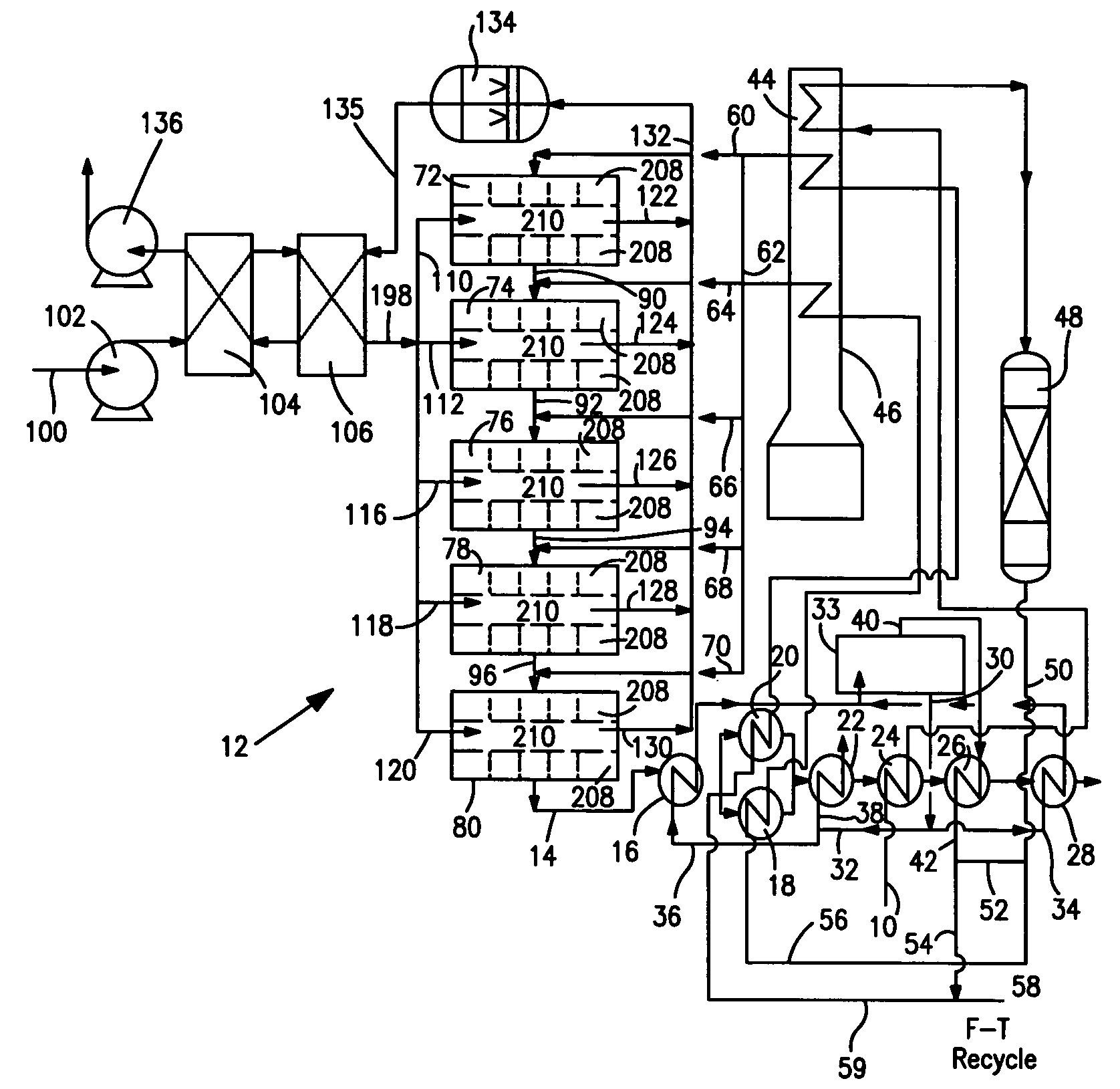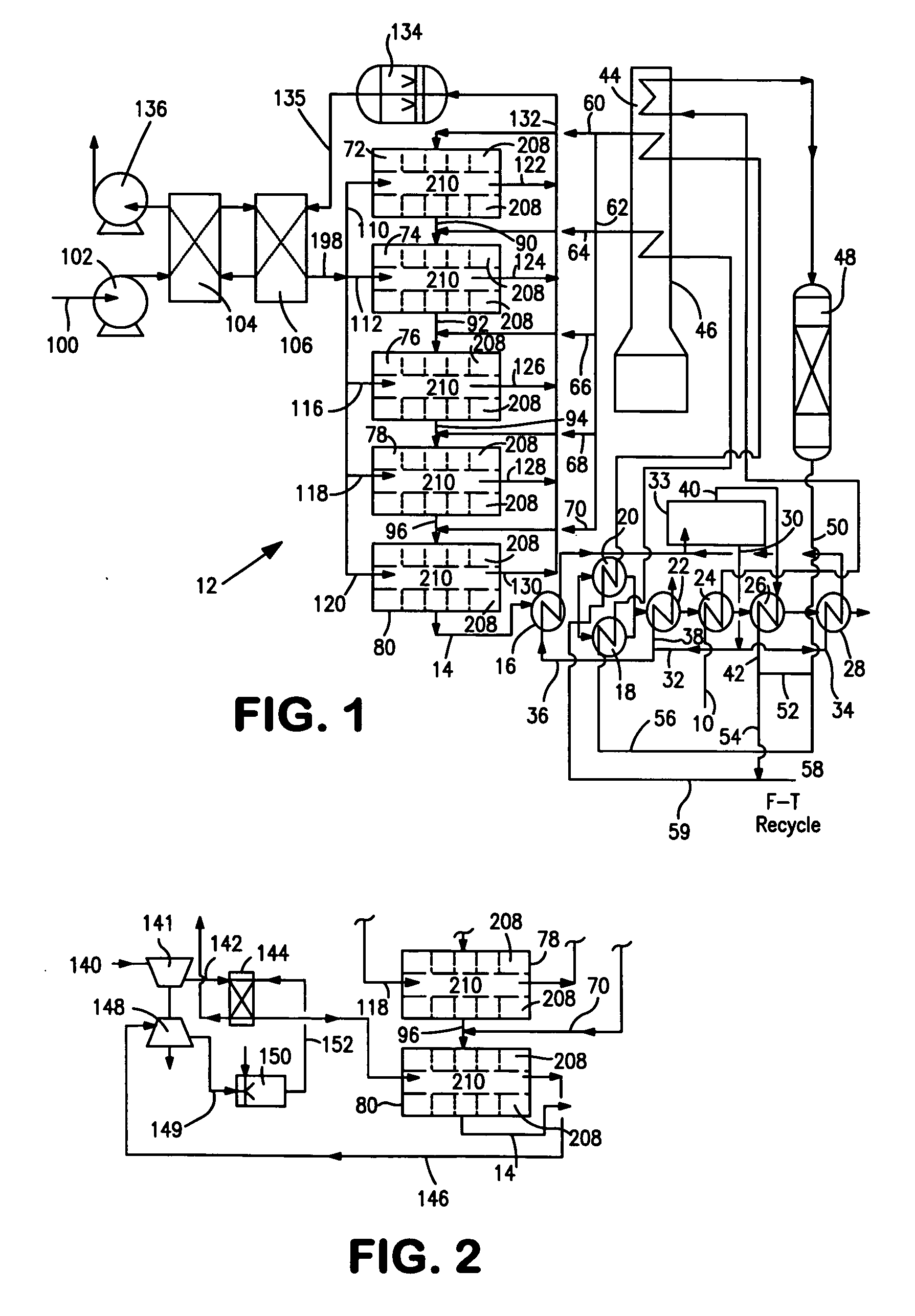Synthesis gas production method and reactor
- Summary
- Abstract
- Description
- Claims
- Application Information
AI Technical Summary
Benefits of technology
Problems solved by technology
Method used
Image
Examples
Embodiment Construction
[0038]With reference to FIG. 1, a process flow diagram is illustrated for producing hydrogen from a hydrocarbon containing gaseous feed which can be a natural gas feed stream 10. Natural gas feed stream 10 is processed within a reactor 12 to produce a synthesis gas product stream 14.
[0039]Reactor 12 is employed in a heat transfer and steam generation environment of a type that is employed in connection with conventional steam methane reformers and autothermal reformers. In this regard, synthesis gas product stream 14 is cooled by passage through waste heat boiler 16, mixed feed heaters 18 and 20, a waste heat boiler 22, a natural gas preheater 24, a super heater 26 and a waste heat boiler 28. Steam stream 30 is divided into subsidiary steam streams 32 and 34. Subsidiary steam stream 32 is further divided into portions 36 and 38. Portion 38 passes through waste heat boiler 22 for export and portion 36 passes waste heat boiler 16 and is returned to steam drum 33. Subsidiary steam stre...
PUM
| Property | Measurement | Unit |
|---|---|---|
| Temperature | aaaaa | aaaaa |
| Temperature | aaaaa | aaaaa |
| Fraction | aaaaa | aaaaa |
Abstract
Description
Claims
Application Information
 Login to View More
Login to View More - R&D
- Intellectual Property
- Life Sciences
- Materials
- Tech Scout
- Unparalleled Data Quality
- Higher Quality Content
- 60% Fewer Hallucinations
Browse by: Latest US Patents, China's latest patents, Technical Efficacy Thesaurus, Application Domain, Technology Topic, Popular Technical Reports.
© 2025 PatSnap. All rights reserved.Legal|Privacy policy|Modern Slavery Act Transparency Statement|Sitemap|About US| Contact US: help@patsnap.com



